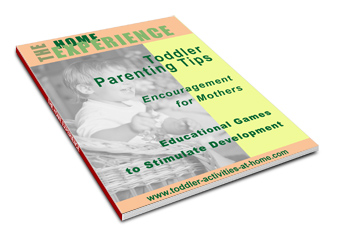Potty Training Techniques Explained
This page looks at some of the most popular potty training techniques.
It also tells you how to find out more about the method(s) that interest you.
There is no one toilet training method that all the experts agree on.
Many parents prefer to take what works for them from each technique, rather than slavishly follow just one.
Here are the 3 recommended potty training techniques – each one successful in its own right.
For Potty Training Techniques
Try The Sit And Wait Method
Start off by sitting the toddler on a potty or toilet after meals and before bath time for a maximum of 3 – 5 minutes (depending on which expert you listen to), to familiarise them with using it.
Some experts advise starting this sitting practice in a nappy, some say take it off from day one.
Encourage your child to stay sitting by reading them a story or singing a song, but never force them.
Sitting time is gradually extended and gets more frequent during the day. Sooner or later a wee or poo will be produced, at which point encouragement spurs the child on to use the potty/toilet independently.
Parents and carers will decide whether to use trainer pants or ‘big boy/girl’ pants when out and about.
To find out more about the sit and wait method: see the foot of the page.
The Intensive Crash Course
Here the parent or carer judges that the child is ready and puts them straight into pants. A few days are dedicated to potty training at home.
Lots of accidents are anticipated at the start of potty training this way.
The idea is that the toddler learns quickly to recognise what wet and soiled pants feel like, which for some experts is necessary before s/he can understand the signals of a full bladder and bowel.
Gina Ford recommends using the sit and wait technique before attempting the intensive toilet training.
Some toddlers are reported to be completely trained within a week using this intensive method. However, you must be sure that the child is genuinely ready for potty training if trying out the crash course training.
To find out more about the intensive crash course method: see the foot of the page.
The Child Led Method
Of all the potty training techniques, this is the most relaxed.
Here you let the child take the initiative and indicate to you when they first want to use the potty or toilet. This might be through ripping off their nappy, or by surprising you one day with a present left in the previously ignored potty.
Just like with the Sit And Wait method, carers decide whether to go cold turkey with pants when out and about, or to put the toddler in trainer pants until these are regularly dry.
The theory goes that because there is no doubt they are ready to be trained, then training is achieved relatively quickly.
To find out more about the Child-Led method: see the foot of the page.
Which Technique Is Best For My Toddler?
Like putting any theory into practice, be prepared for any of these potty training concepts to be completely unsuitable for your toddler – or you, for that matter. It is important to find a way to potty train that causes you the minimum of stress.
This will ensure you are relaxed and positive – and that is one of the things that all the experts agree will maximise your toddler’s chances of success at potty training.
To Find Out More About Potty Training
...About The Sit and Wait Method
- New Toddler Taming (page 129), Dr Christopher Green, 2001, Vermilion
- Successful Potty Training (page 30), Heather Welford, 2002, Thorsons
- Your Toddler Month By Month (page 128-9), Dr Tanya Byron, 2008, Dorling Kindersley Ltd
...About The Intensive Crash Course Method
- Potty Training In One Week, Gina Ford, 2003, Vermilion
- Potty Training (pages 47-9), Jane Gilbert, 2003, Hamlyn
- Successful Potty Training (pages 14-16), Heather Welford, 2002, Thorsons
...About The Child – Led Method
- Successful Potty Training (pages 14-16), Heather Welford, 2002, Thorsons
To Help Busy Mums and Dads Here Are Some Related Shopping Items
When you purchase from this link, you are actually purchasing from Amazon.com, and you can have peace of mind that your order will be processed by Amazon’s secure order server.
Other Articles for You
Home l Stay At Home Moms l Toddlers Games l Toddler Exercise l Constipation in Toddlers l Shopping with Toddlers l Helping Toddlers Overcome Fears l Teaching Toddlers Manners l Toddler Music Activities l Homeschooling Toddlers l Toddler Bedroom l Toddlers And Food l Parenting Toddlers Alone l Reading to Toddlers l Aggressive Toddler l Toddler Sleep Tips l Buying toddler toys l Shy toddler l Development l Toddler Chores l Toddler Routines l Toddler Educational Activities l Toddler Learning Activities l Toddler Coloring Pages l










New! Comments
Have your say about what you just read! Leave me a comment in the box below.